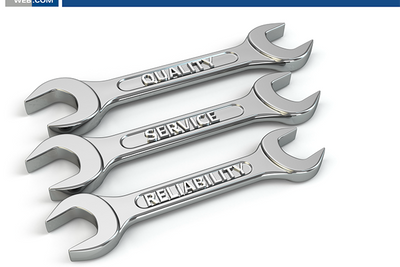Publisher's note: When a person has a hammer - everything looks like a nail. Once a maintenance engineer learns techniques like Reliability Centered Maintenance (RCM) or Weibull analysis, it seems like they apply the technique to every potential area of failure they can find - whether RCM or Weibull analysis can add value or not. Reliability tools must be used in the proper context to create the best result and the more tools we understand the better we can apply them.
We asked our favorite reliability guru, Mr. H. Paul Barringer to help us understand what reliability tools are available to us as maintenance professionals, when we can and should use them and what results we can expect if we apply them correctly. - Terrence O'Hanlon, CMRP, Publisher
The details about these tools will be brief as books are written about each item. Think of the presentations below as hors d'oeuvres (a little snack food or starters)-not the main course.
The most important reliability tool is a Pareto distribution based on money-specifically based on the cost of unreliability which directs attention to work on the most important money problem first. No magic bullet exists for reliability issues-don't waste your time looking for a single magic tool-none exist!
These definitions are written by H. Paul Barringer
- Reliabilityweb RCM vs. FMEA - There Is a Distinct Difference! ›
- Reliabilityweb Tools for Improving Maintenance strategies and ... ›
- Reliabilityweb Reliability Tools - Reliability ›
- Reliabilityweb Poisson Distribution ›
- Reliabilityweb Fault Tree Analysis ›
- Reliabilityweb Probability Plots ›
- Reliabilityweb Reliability Block Diagram Models ›
- Reliabilityweb Reliability ›
- Reliabilityweb Pareto Distribution ›
- Reliabilityweb Weibull Database ›
- Reliabilityweb Weibull Analysis ›
- Reliabilityweb Normal Distribution ›
- Reliabilityweb Exponential Distribution ›
- Reliabilityweb Weibayes Estimates ›
